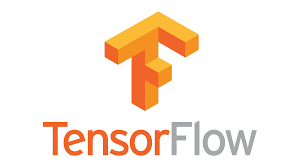Introduction
TensorFlow is easily the most widely used deep learning framework right now. The idea behind TensorFlow (TF) has even spawned multiple products, such as TensorFlow.js, Swift for TensorFlow, TensorFlow Lite, among other things.
Among all the deep learning frameworks we’ve used in the last few years, none have seen the incredible adoption rate and vast improvement as much as TensorFlow. It has all culminated in the latest release, TensorFlow 2.0, a flexible and super-charged version of the original framework.
And who better to talk about that, plus all things TensorFlow, than TF’s very own Product Manager? We are delighted to welcome Paige Bailey on the latest episode of the DataHack Radio podcast!
Paige and Kunal cover an expansive list of TensorFlow-related topics in this podcast, including:
- Paige’s role at Google on the TensorFlow team
- The evolution of TensorFlow
- Swift for TensorFlow
- A few really cool examples of TensorFlow in action, and much more!
You can subscribe to Analytics Vidhya’s DataHack Radio podcast on any of the below platforms:
Paige Bailey’s Background – Data Science Journey So Far
“My background is a little different than most machine learning engineers.”
I’m quite intrigued by Paige’s journey before she landed a data science role. Her path clearly emphasizes the diverse background people can take to get into this field. You don’t need an exclusive engineering degree, folks!
Paige did her graduation in Geophysics and applied mathematics from Rice University. All of her research was planetary-science focused (including a couple of NASA projects).
The third internship she did is quite interesting. It was in the oil and gas industry at Chevron where she was introduced to the world of data science. Chevron offered her a full-time role as a data scientist and it all took off from there.
“I went from being a planetary scientist to being a data scientist in the oil and gas industry. My graduate work was focused on computer science and carbonate geology. I then had an opportunity to market Microsoft doing machine learning (in the Azure team).”
Around October of last year, another opportunity came up – this one even more fascinating. Paige was offered a role in Google’s TensorFlow team to help build out open source tooling. And she has recently transitioned into her new role – Product Manager of TensorFlow
Quite a journey!
Paige’s Role at Google on the TensorFlow Team – From a Developer Advocate to a Product Manager
Paige started off as a Developer Advocate at Google (for TensorFlow) last year. Curious what this role entails? We were too! Her day-to-day responsibilities included:
- Going to data science and developer conferences
- Talking about TensorFlow and it’s various aspects
- To be ever-present on GitHub
- Talking one-on-one to developers about their experience using TensorFlow (primarily non-Google developers)
- Take this feedback back to the product teams
“There are a lot of similarities between being a developer advocate versus being a product manager.”
Being a product manager is quite a hands-on experience. Paige has smoothly transitioned to this role and is directly responsible for the success of the product she is working on (perks of being a product manager!).
She is currently looking after Swift for TensorFlow – a language with massive potential and a burgeoning developer community. Jeremy Howard is a huge advocate of Swift for TensorFlow so if you needed a reason to check it out – there you go.
“The most effective product managers have a lot of years of engineering under their belt. What you are responsible for is deciding what the strategic direction of a product should be.”
The Evolution of TensorFlow
It’s no secret that TensorFlow was painfully slow when it was open-sourced back in 2015. It did open up a lot of possibilities of working with deep learning techniques but the biggest complaint from data scientists and developers pinpointed the biggest issue.
This is where Keras came in – and made TensorFlow a much more viable option to work with.
“Having Keras as the recommended high-level API and building it directly into TensorFlow 2.0 was a great path forward.”
Features like Eager Execution and reducing duplication across the codebase has happened directly from user feedback. Another great example of Google listening to its user community and implementing what is required.
We can now scale a complete deep learning model using Keras and just two lines of code. TensorFlow 2.0 is a huge step forward and I highly recommend checking it out today.
Non-Typical Examples of TensorFlow in Action
We’re all familiar with the typical use cases of TensorFlow, right? But how about a few examples which took even the TensorFlow team by surprise? Here are some use cases that stood out for Paige:
- A group of developers came up with a reinforcement learning library called huskarl using TensorFlow at its core!
- A cool project where you ask a question listing out the symptoms you have and the model (using TensorFlow) scrapes through a bunch of different doctor recommendations
- A graduate student built a Keras model to classify asteroids and exoplanets
- Automating the popular Flappy Bird game
- Using Generative Adversarial Networks (GANs) to create textured experiences for games
There are many more examples of surprising TensorFlow applications that don’t necessarily come to our minds initially. If you have worked on any such projects, make sure you tell us in the comments section below.
Swift for TensorFlow
A very basic but curious question I’ve come across (and wondered myself) – why Swift for TensorFlow?
Swift was created by Chris Lattner, who is also part of the TensorFlow team. He has also led the MLIR project for TensorFlow. That gives us a nice hint as to why these two behemoths were combined. Chris is well-known as the main author of LLVM as well.
If you’ve ever used Swift before, you’ll instantly connect with how Paige thinks about it:
“Swift looks a great deal like Python but it’s also supremely fast.”
You can watch Chris presenting Swift for TensorFlow in detail at the TensorFlow Dev Summit earlier this year:
Paige has gives us an in-depth look at Swift for TensorFlow in this podcast so make sure you tune in to this section. This could potentially be the next big machine learning tool so you really don’t want to miss out on it.
I’m a data visualization fan so I was especially taken by the ‘swiftplot‘ library – Swift for TF’s answer to matplotlib. You should also check out the official Swift for TensorFlow page to get started with the tool.
Resources Mentioned in the Podcast
End Notes
TensorFlow 2.0 is a flexible and useful framework that I’ve so far enjoyed working with. If you’ve been hesitant to try out TensorFlow – this is the right time to at least give it a whirl.
If you have any questions related to TensorFlow and its related products, feel free to let us know in the comments section below. And do share your experience with TensorFlow 2.0 or Swift for TF!







